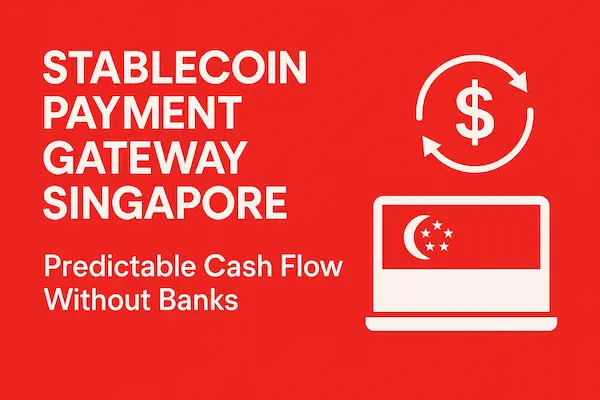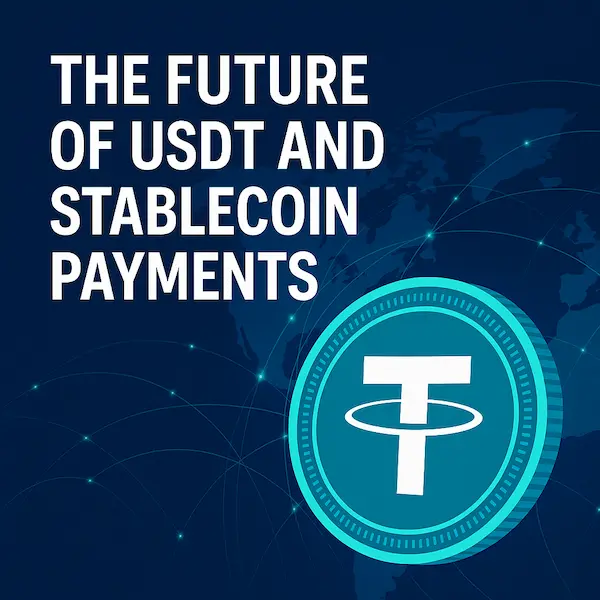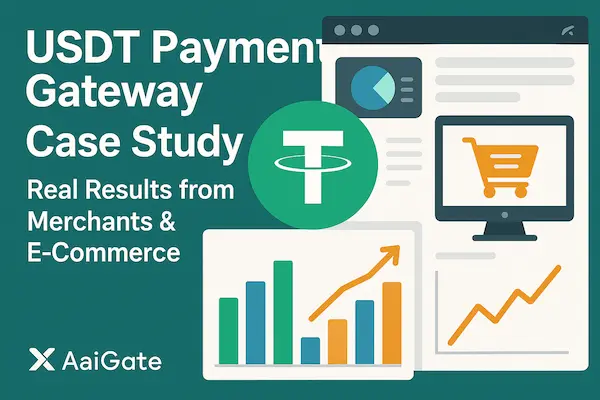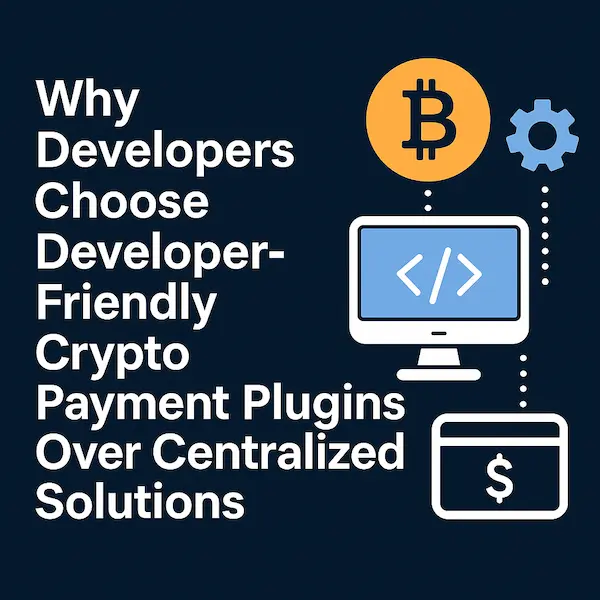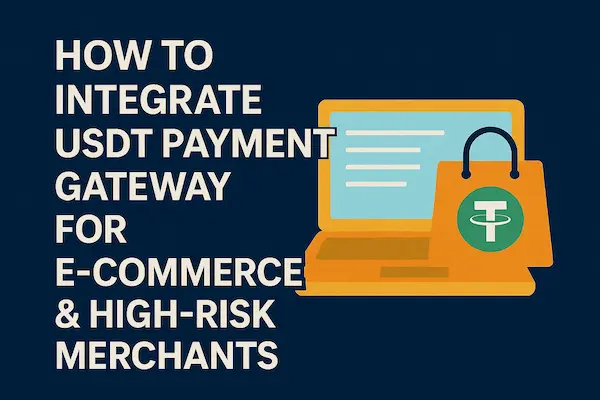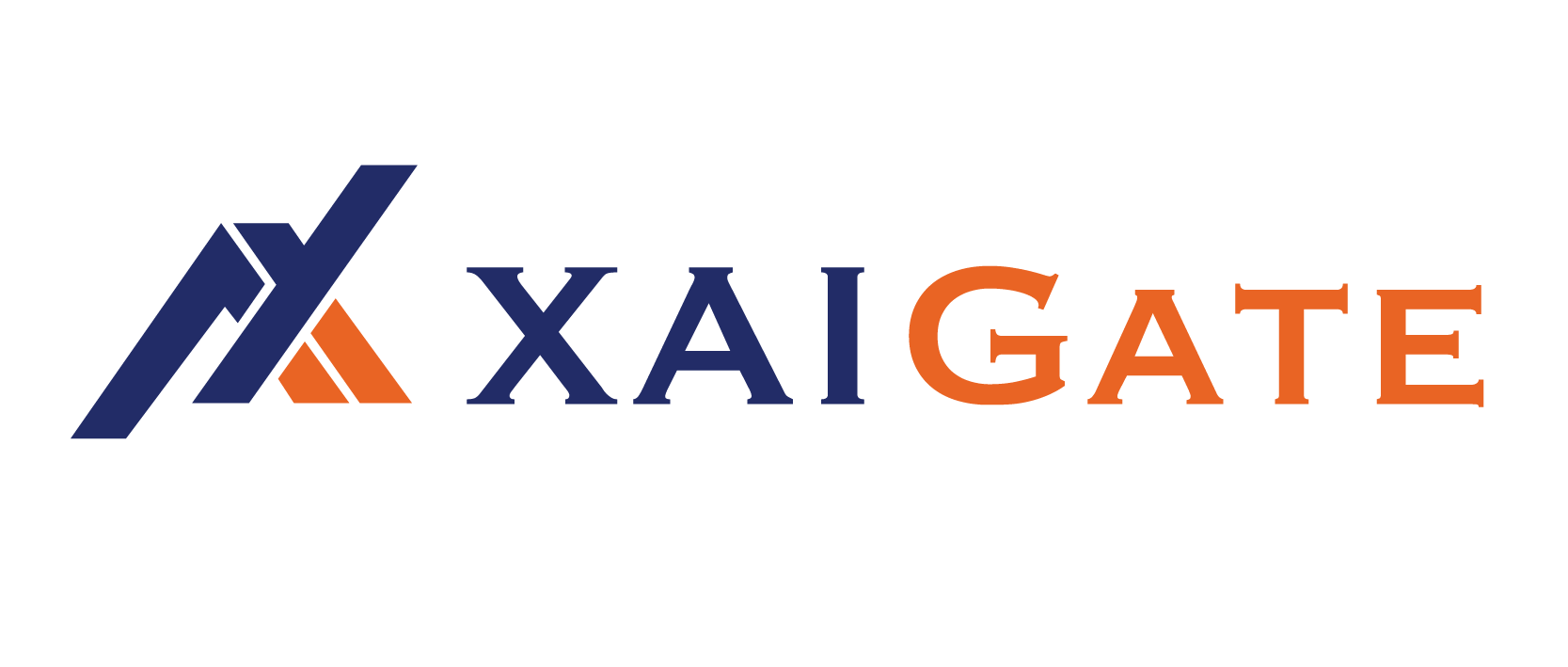Singapore is rapidly becoming one of the most important fintech hubs in the world. With its strong regulatory framework and global financial reputation, the city-state attracts both startups and multinational companies looking for efficient payment solutions. Among these innovations, the Stablecoin Payment Gateway Singapore model is gaining momentum. It allows businesses to receive payments in stablecoins such as USDT and USDC, ensuring predictable cash flow without the usual delays and high costs of traditional banks.
According to the Monetary Authority of Singapore (MAS), digital payment token transactions in the country grew by more than 35% between 2023 and 2024, showing how quickly businesses are adopting blockchain-based payment rails.
Contents
- 1 1. Why Singapore is Leading in Stablecoin Payments
- 2 2. Benefits of a Stablecoin Payment Gateway in Singapore
- 3 3. Key Use Cases for Stablecoin Gateways in Singapore
- 4 4. Regulatory Landscape in Singapore
- 5 5. Case Studies: Stablecoin Adoption in Singapore
- 6 FAQs – Stablecoin Payment Gateway Singapore
- 7 Conclusion
1. Why Singapore is Leading in Stablecoin Payments
Singapore has become one of the most advanced markets in Asia for digital assets and blockchain adoption. The government’s commitment to building a transparent yet innovation-friendly environment makes it the perfect place for businesses to integrate a Stablecoin Payment Gateway Singapore into their operations.
In August 2026, the Monetary Authority of Singapore (MAS) officially rolled out its Stablecoin Regulatory Framework, setting strict requirements on reserve management, transparency reports, and independent audits. This means that stablecoins like USDT and USDC can now be used by merchants with greater confidence, as they are backed by clear legal protections.
Compared with traditional banking systems that often take 2–5 business days to process international payments, a Stablecoin Payment Gateway Singapore can complete transactions in just a few minutes. This is particularly crucial for SMEs, freelancers, and e-commerce businesses that rely on predictable cash flow to remain competitive.
Recent fintech reports show that over 28% of SMEs in Singapore explored stablecoin payments in 2024, and this number is expected to surpass 40% by the end of 2026. This trend demonstrates how Singapore is positioning itself not only as a regional fintech hub but also as a global leader in stablecoin adoption.
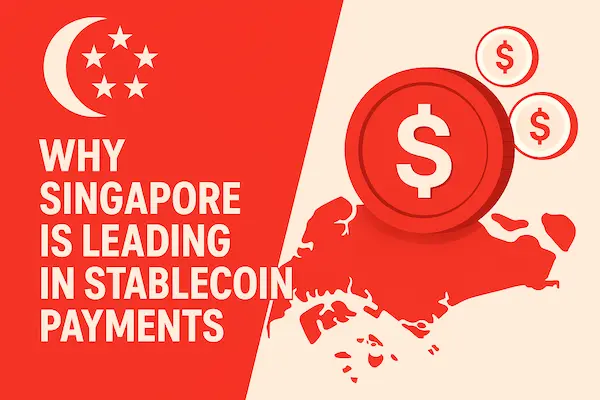
2. Benefits of a Stablecoin Payment Gateway in Singapore
The adoption of a Stablecoin Payment Gateway Singapore brings a set of practical advantages for both small and large businesses. Unlike speculative cryptocurrencies, stablecoins are pegged to traditional fiat currencies such as the US Dollar, ensuring stability in value. This makes them a reliable tool for companies that need predictable cash flow.
1. Predictable Cash Flow
Stablecoins like USDT and USDC track the value of the U.S. dollar. For Singaporean merchants, this reduces the risk of volatility while still enjoying the benefits of blockchain settlement. For example, an e-commerce shop can invoice international customers in USDC and receive funds within minutes — without worrying about sudden price swings.
2. Faster Cross-Border Transactions
Traditional bank transfers across regions such as the U.S., Europe, and Southeast Asia can take 2–5 business days. In contrast, a Stablecoin Payment Gateway Singapore completes transactions in under 10 minutes on average, regardless of weekends or holidays. This speed is critical for exporters and freelancers working with overseas clients.
3. Lower Transaction Costs
Bank wires and credit card payments typically cost between 2% and 4% in fees. By comparison, stablecoin gateways charge 0.5%–1%, allowing businesses to save 50–70% on transaction costs. A 2024 report by PwC Singapore estimated that SMEs could collectively save over SGD 120 million annually if even 30% of them switched to stablecoin payments.
4. Independence from Banks
One of the key reasons companies adopt a Stablecoin Payment Gateway Singapore is the ability to operate beyond traditional banking restrictions. Businesses that struggle with cross-border compliance or face delays in settlement can maintain financial agility by receiving stablecoins directly and converting them into fiat only when necessary.
5. Seamless Integration with Business Platforms
Modern gateways offer plug-ins for Shopify, WooCommerce, Magento, and PrestaShop, as well as APIs for custom fintech solutions. This makes it easy for both startups and established enterprises to integrate stablecoin payments into their daily operations without major IT investment.
Table 1: Stablecoin Gateway vs Traditional Bank Payments
When comparing a Stablecoin Payment Gateway Singapore with traditional bank payments, the differences in cost, speed, and accessibility are clear.
| Feature | Stablecoin Payment Gateway Singapore | Traditional Bank Payments |
|---|---|---|
| Settlement Speed | 5–10 minutes (24/7, global) | 2–5 business days (bank hours only) |
| Transaction Fees | 0.2% – 1% | 2% – 4% (credit cards) or SGD 25–40 per wire transfer |
| Cross-Border Access | No restrictions, instant global reach | Often limited by bank networks & correspondent banks |
| Volatility Risk | Minimal (USDT, USDC pegged to USD) | None, but higher FX conversion costs |
| Compliance | Licensed under MAS Digital Payment Token framework | Bank-regulated, slower processes |
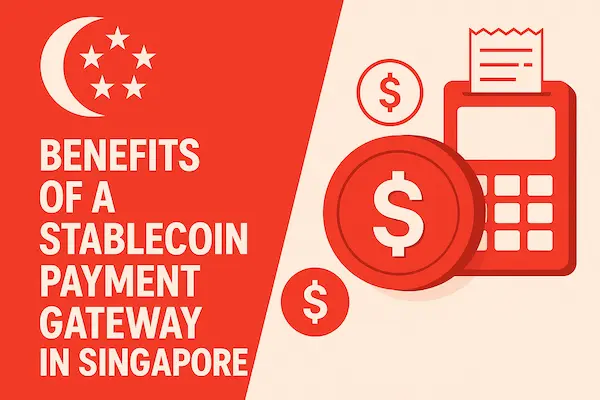
3. Key Use Cases for Stablecoin Gateways in Singapore
The value of a Stablecoin Payment Gateway Singapore becomes most visible when applied to real business scenarios. From online retail to cross-border trade, stablecoins are solving pain points that traditional banking has struggled with for decades.
1. E-Commerce and Online Retail
Singapore’s e-commerce market is projected to surpass USD 12 billion by 2026. Merchants on platforms like Shopify, WooCommerce, and Magento are increasingly integrating stablecoin gateways to reduce transaction fees and reach global customers. For example, a fashion retailer based in Singapore that previously paid 3% in card processing fees now pays just 1% through USDT/USDC payments — saving thousands annually.
2. Freelancers and SMEs
Independent professionals and small enterprises often face delays and high fees when receiving international transfers. A Stablecoin Payment Gateway Singapore enables freelancers to get paid in USDC within minutes, avoiding PayPal’s 3–5% fees and multi-day settlement times. In 2024, a survey by PwC Singapore found that 42% of freelancers expressed interest in stablecoin invoicing tools.
3. Exporters and Importers
Cross-border trade requires predictable cash flow. By accepting stablecoins, Singaporean exporters can reduce FX risks and settlement delays. For example, an electronics supplier exporting to Indonesia reported that switching to stablecoin payments reduced settlement time from 4 days to under 15 minutes, improving liquidity management.
4. Crypto Startups and Exchanges
Many Singapore-based fintech and crypto startups prefer using Stablecoin Payment Gateway Singapore solutions because they can integrate directly with DeFi, liquidity pools, and on-chain financial tools. This not only reduces operational costs but also allows faster access to global liquidity.
5. Global Remittance and Migrant Workers
Singapore has a large community of migrant workers sending money home to countries like the Philippines, Indonesia, and India. Traditional remittance services charge 5–8% fees, while stablecoin gateways enable transfers at less than 1%. This translates into billions in potential savings across the remittance market.
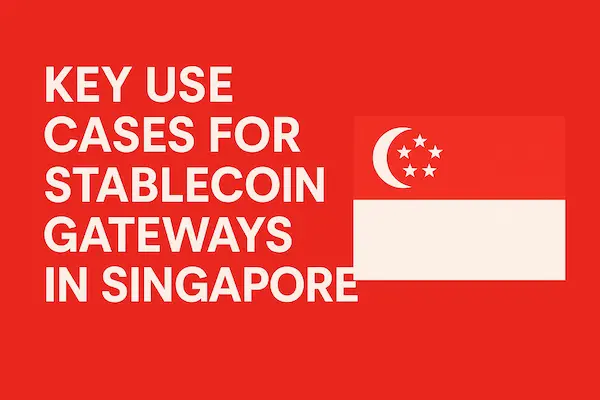
Table 2: Leading Stablecoin Options in Singapore
When choosing a Stablecoin Payment Gateway Singapore, businesses often evaluate which stablecoin is best suited for their needs. The three most common options are USDT (Tether), USDC (Circle), and DAI (MakerDAO). Each has unique advantages depending on the use case.
| Stablecoin | Backing Mechanism | Key Advantage | Best Use Cases in Singapore |
|---|---|---|---|
| USDT (Tether) | Backed by USD reserves and short-term assets | Largest liquidity, widely accepted | E-commerce, high-volume remittance |
| USDC (Circle) | Fully regulated USD reserves with monthly audits | Strong compliance & transparency | SMEs, fintech platforms, regulated markets |
| DAI (MakerDAO) | Over-collateralized crypto assets | Decentralized & transparent | Web3 projects, DeFi integrations |
4. Regulatory Landscape in Singapore
A critical factor behind the rise of the Stablecoin Payment Gateway Singapore ecosystem is the regulatory clarity provided by the Monetary Authority of Singapore (MAS). Unlike many jurisdictions that remain uncertain about stablecoin usage, Singapore has taken a proactive stance.
In August 2026, MAS introduced the Stablecoin Regulatory Framework, designed to ensure that stablecoin issuers maintain high levels of transparency and consumer protection. Key highlights of the framework include:
Reserve Backing: Issuers must hold equivalent cash or high-quality liquid assets to back their stablecoins at a 1:1 ratio.
Audit Requirements: Monthly independent audits are mandatory to prove the integrity of reserves.
Redemption Rights: Holders of stablecoins must be able to redeem their tokens for fiat currency at par value within 5 business days.
Licensing: Payment service providers and issuers are required to obtain a Digital Payment Token (DPT) License from MAS.
AML/CFT Obligations: All providers integrating a Stablecoin Payment Gateway Singapore must implement strict Know-Your-Customer (KYC) and anti-money laundering controls.
This regulatory clarity has reassured both consumers and businesses. As a result, fintech startups, SMEs, and even multinational companies in Singapore are more confident in integrating stablecoin payments into their operations.
5. Case Studies: Stablecoin Adoption in Singapore
While theory highlights the potential, real-world examples show how a Stablecoin Payment Gateway Singapore transforms business operations. Below are three use cases from different industries in Singapore.
Case 1: E-Commerce Startup
A fashion e-commerce startup in Singapore integrated a Stablecoin Payment Gateway Singapore in 2024 to handle cross-border orders. Previously, they relied on credit card processors charging 3%–3.5% per transaction. After switching to USDC payments, their average transaction fee dropped to 0.8%. Within six months, the company reported savings of over SGD 35,000 and faster global settlement times, improving their ability to reinvest in marketing and inventory.
Case 2: Freelance Agency
A digital design agency with clients in the U.S. and Europe faced delays of up to 5 business days for bank transfers. By adopting a Stablecoin Payment Gateway Singapore, they now receive USDT payments in under 15 minutes. This not only reduced their waiting time but also eliminated high conversion fees. In a client survey, 92% of their overseas customers found stablecoin payment “faster and more convenient” than PayPal.
Case 3: SME Exporter
A medium-sized electronics exporter dealing with partners in Indonesia and Vietnam often struggled with FX fluctuations and slow bank settlements. After integrating stablecoin payments, they reduced settlement time from 4 days to 20 minutes and gained more predictable cash flow. With transactions denominated in USDC, the exporter could plan inventory cycles with higher accuracy and avoid SGD 50,000 annually in banking and conversion charges.
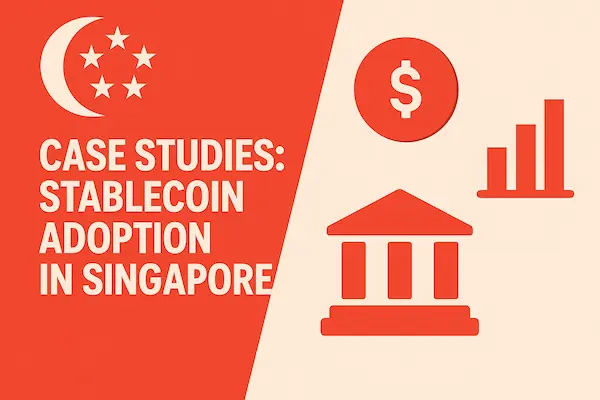
FAQs – Stablecoin Payment Gateway Singapore
1. What is a Stablecoin Payment Gateway Singapore?
It is a regulated solution that allows merchants in Singapore to accept stablecoins like USDT and USDC for faster, cheaper, and predictable payments.
2. Is using a Stablecoin Payment Gateway Singapore legal?
Yes. Under the MAS Stablecoin Regulatory Framework (2026), licensed providers can legally offer stablecoin payment services in Singapore.
3. How fast are payments compared to banks?
Transactions through a Stablecoin Payment Gateway Singapore settle in 5–10 minutes, while bank transfers usually take 2–5 business days.
4. Which stablecoins are most used in Singapore?
USDT and USDC are the most widely accepted stablecoins, while DAI is popular in Web3 and DeFi projects.
5. Why do SMEs and freelancers adopt stablecoin gateways?
They save 50–70% on fees and gain immediate access to funds, improving cash flow predictability.
6. Can I integrate a stablecoin gateway with Shopify or WooCommerce?
Yes. Most Stablecoin Payment Gateway Singapore providers offer plug-ins and APIs for e-commerce platforms.
7. Do I need a bank account to use a stablecoin gateway?
Not necessarily. Merchants can hold USDT/USDC directly or convert to SGD via exchanges when needed.
8. How does MAS regulate stablecoin gateways?
MAS requires stablecoins to be fully backed, audited monthly, and redeemable at par value, ensuring security for merchants and consumers.
Conclusion
Singapore is not only a global financial hub but also a frontrunner in stablecoin adoption. With the MAS Stablecoin Regulatory Framework (2026), businesses now have a secure, transparent, and compliant way to adopt digital payments. For SMEs, exporters, freelancers, and e-commerce platforms, a Stablecoin Payment Gateway Singapore delivers predictable cash flow, faster settlement, and reduced costs compared with traditional banking systems.
In a landscape where global commerce is moving at digital speed, companies that integrate stablecoin payments today will be the ones leading tomorrow. The momentum is already here — surveys show that nearly 40% of SMEs in Singapore plan to adopt stablecoin solutions by the end of 2026.
Quick Summary Table
| Key Insight | Data Point (2024–2026) | Why It Matters |
|---|---|---|
| Transaction Speed | 5–10 minutes vs 2–5 banking days | Enables real-time global cash flow |
| Cost Savings | 0.5%–1% vs 2%–4% fees | Up to 70% cheaper for merchants |
| Adoption Trend | 40% of SMEs exploring stablecoin payments | Rapid mainstream adoption in Singapore |
| Regulatory Support | MAS Stablecoin Framework 2026 | Provides trust and compliance clarity |
Ready to future-proof your business?
Integrating a Stablecoin Payment Gateway Singapore means faster settlement, lower fees, and compliance under MAS rules. Whether you’re running an online store, a freelance agency, or an SME exporter — now is the best time to take action.
📞 Contact XaiGate – Best Stablecoin Payment Gateway today for a free consultation, and start accepting USDT and USDC payments instantly — without waiting on banks.
For daily updates, subscribe to XAIGATE’s blog!
We may also be found on GitHub, and X (@mxaigate)! Follow us!

